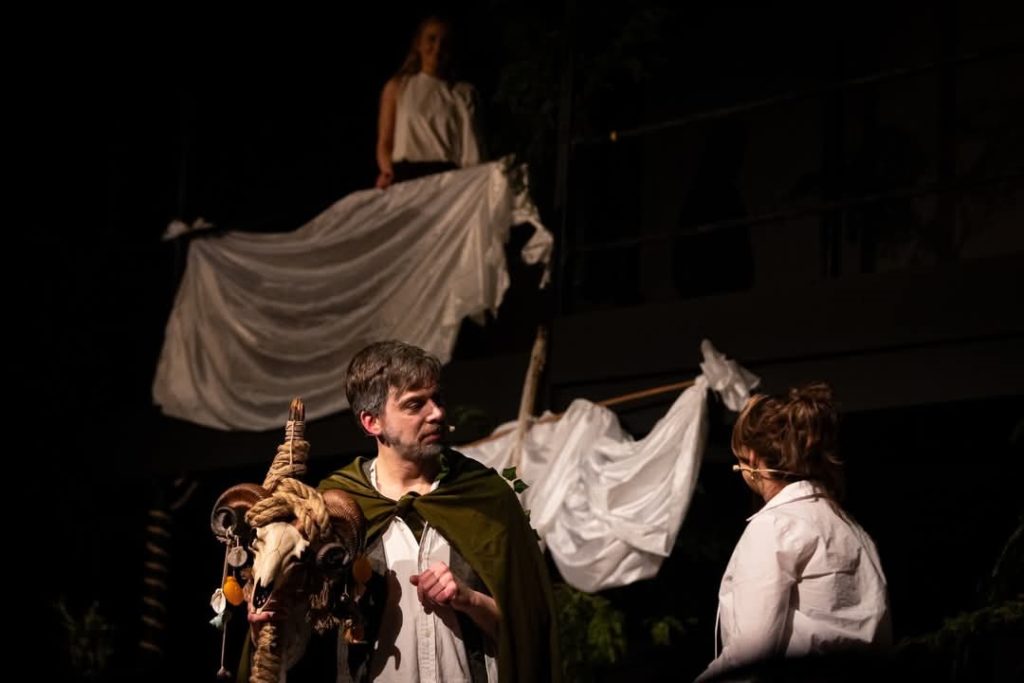
Mark Simmonds’s Prospero, staff in hand, in The Tempest at Theatre@41, Monkgate
AFTER focusing on musical theatre, adventurous York company Black Sheep Theatre Productions stretched its wings by staging Shakespeare’s everything-plus-the-kitchen-sink last play with original music by founder, director and musical director Matthew Peter Clare and Gregory Parker.
Several of Ariel’s speeches were turned into song for Gemma-Louise Keane, on her return to the stage after a long break where you may have seen her fronting the band Kisskisskill or on York’s ghost tour circuit as Deathly Dark Tours’ Daria Deathly. Inspired casting by Clare, finding a performer with bags of stage presence and personality, coupled with an individual look and voice, typified by her rendition of Full Fathom Five.
Mark Simmonds, who has made his mark as much in Jorvik Gilbert and Sullivan Society, York Opera and York Light Opera Company as in York Settlement Community Players, has a natural musicality and resonant timbre to his voice.
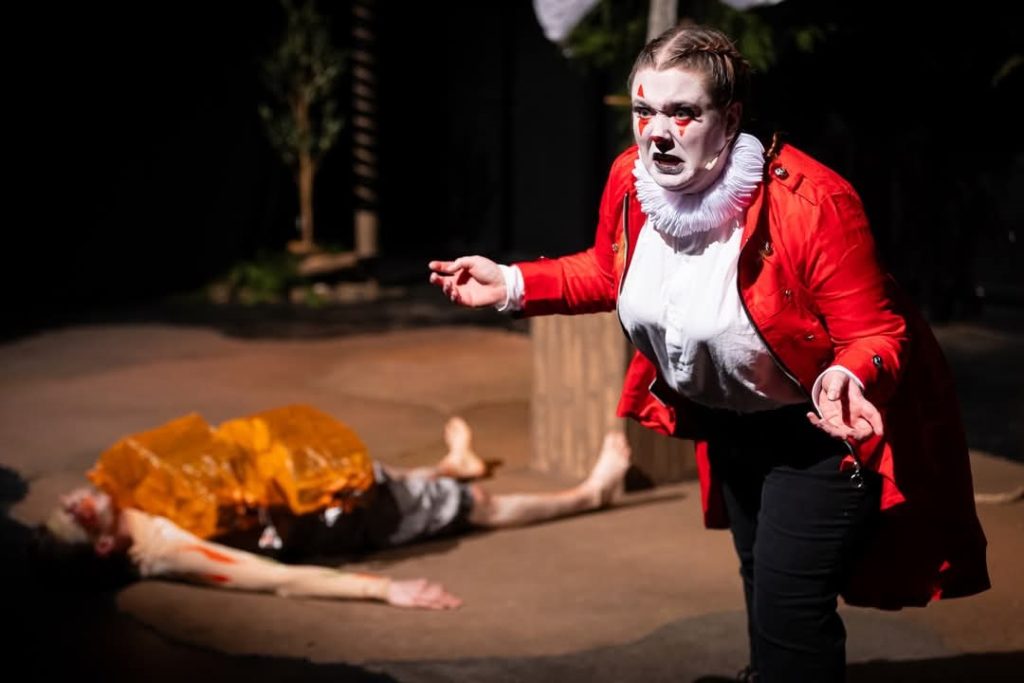
Charlie Clarke’s Trincula in The Tempest. Josh Woodgate’s Caliban adopts a prone position beneath his bags of wood
Allied with being tall, this gave him righteous if sinister command as the dispossessed Milanese duke, Prospero, a command exacerbated by conducting his magical, storm-stirring powers from the John Cooper Studio’s mezzanine level, as well as in his treatment of his island slaves, Ariel and Caliban (more of whom, later).
Clare built his production on a brace of interlinking triangles, bringing magic, music and mayhem to the play’s three plot lines of comedy, tragedy and romance, fuelled by familiar Shakespeare tropes of mistaken identity, a family at war, murderous plotting and plot-thickening intrigues. The magic emanated from Prospero, and so too did the mayhem that ensued in the torrid tale of a shipwreck and its high-society survivors, spilling out onto Prospero’s island.
The music emanated from percussionist Clare’s band of eight: Helen Warry and Elle Weaver’s violins; Clare Pearson’s viola and Lindsay Illingworth’s violoncello; Fergus Vickers’ guitar, Rosie Morris’s contrabass and, best of all, Sarah Paterson’s harp.
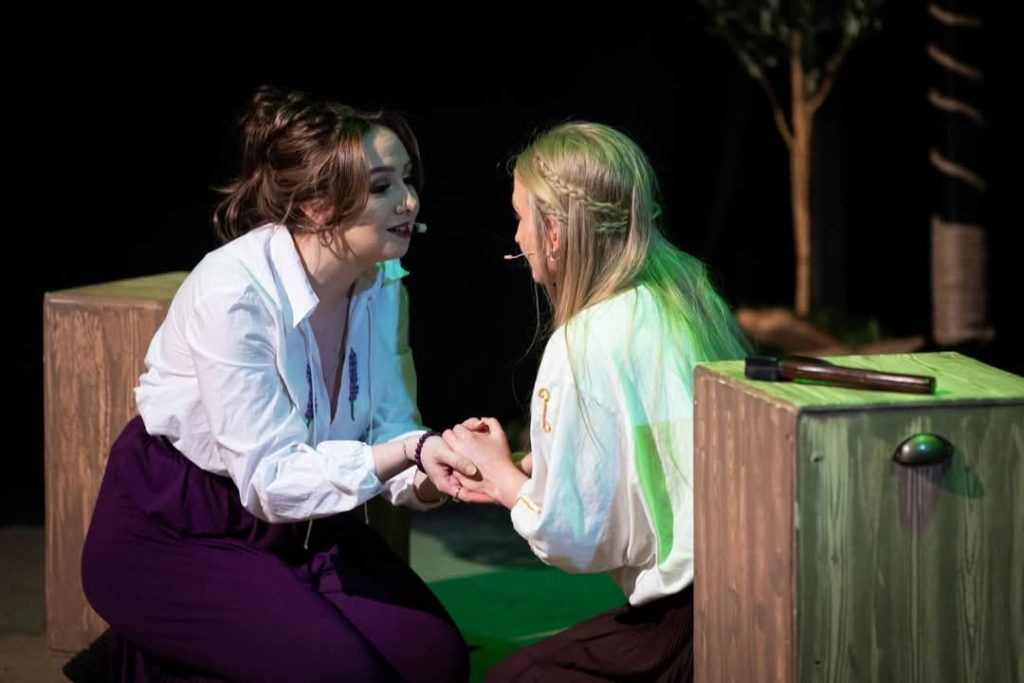
Chloe Pearson’s Fernanda, left, and Freya McIntosh’s Miranda in The Tempest
The underscoring was particularly effective, often beautiful too, and most ambitious of all was the transformation of the play within the play into a song, Blessings, with vocal interplay and solos for Maddie Jones’s Iris, Molly Whitehouse’s Ceres and Rocks Nairn-Smith’s Juno.
The Tempest is a restless, breathless play of constant struggle and ultimate resolution, a maelstrom of tortured emotions, terror, a need to find a home, love, a safe place in the world, a reason to shake off boredom or cast off grief. Or as Clare put it: a play of “family and love, subjugation and bloody plots, reconciliation and forgiveness, euphoria and despair”.
Hence its helter-skelter tumble of tragedy and comedy that Clare addressed successful by applying “more Brechtian style” for the more absurd characters, such as Charlie Clarke’s Trincula, Dan Poppitt’s Alonso, and especially the outstanding John Woodgate’s cruelly abused Caliban, while favouring naturalism for the plot-driven likes of Prospero, Meg Conway’s viperous Antonia and the Sapphic love of Freya McIntosh’s Miranda and Chloe Pearson’s Fernanda.
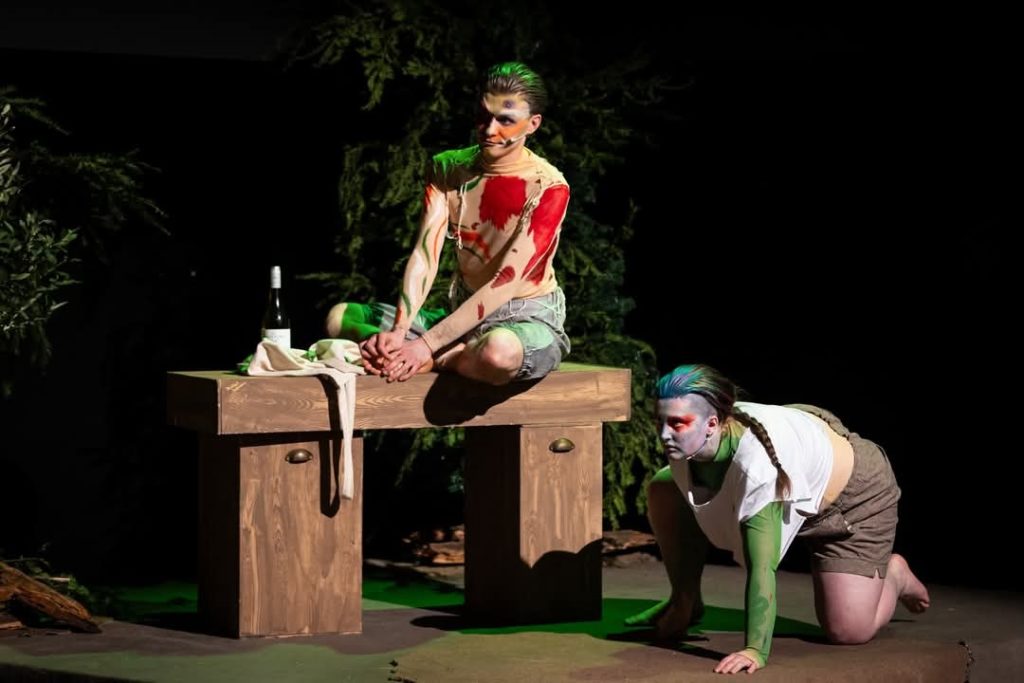
Josh Woodgate’s Caliban and Gemma-Louise Keane’s Ariel in Black Sheep Theatre Productions’ The Tempest
Mikhail Lim’s Gonzalo, Rosie Stirling’s Sebastyne and Jack Fry’s Master of Ships all contributed to the pleasures of this Tempest kicking up a storm anew, aided by Molly Whitehouse’s playful costumes, Charlie Clarke & Josh Woodgate’s striking, circus and cabaret-inspired make-up and Will Nicholson’s sound and lighting design, fast making himself the go-to-guy of York technicians in 2025.
After Woodgate’s turn as Caliban, eye-catching from the moment he emerged bleary eyed from beneath the shelter of the raised stage, CharlesHutchPress looks forward to his future performances, led off by his ensemble role in Inspired By Theatre’s Rent from Thursday to Saturday this week at the Joseph Rowntree Theatre.

Black Sheep Theatre Productions “stretching out its wings” in The Tempest in a radiant scene for Gemma-Louise Keane’s Ariel
Coming next from Black Sheep Theatre will be a return to Theatre@41 for an original play, The Inner Selves, from May 13 to 17. This four-hander charts the decline of two people’s mental health, and their marriage, as shown through Henry and Nora and the cacophonic assault of their inner thoughts. The play revolves are one bad day of mediocrity and boredom being the final straw for the pair as emotions come to a boil. Will this marriage survive? Even until morning?
Not for young children, its content warning takes in: alcohol, smoking, swearing, domestic abuse, emotional abuse, discussion of self-harm, marriage, divorce, loss of child, suicidal thoughts, mental health.
Tickets for the 7.30pm evening performances and 2.30pm Saturday matinee are on sale at tickets.41monkgate.co.uk.
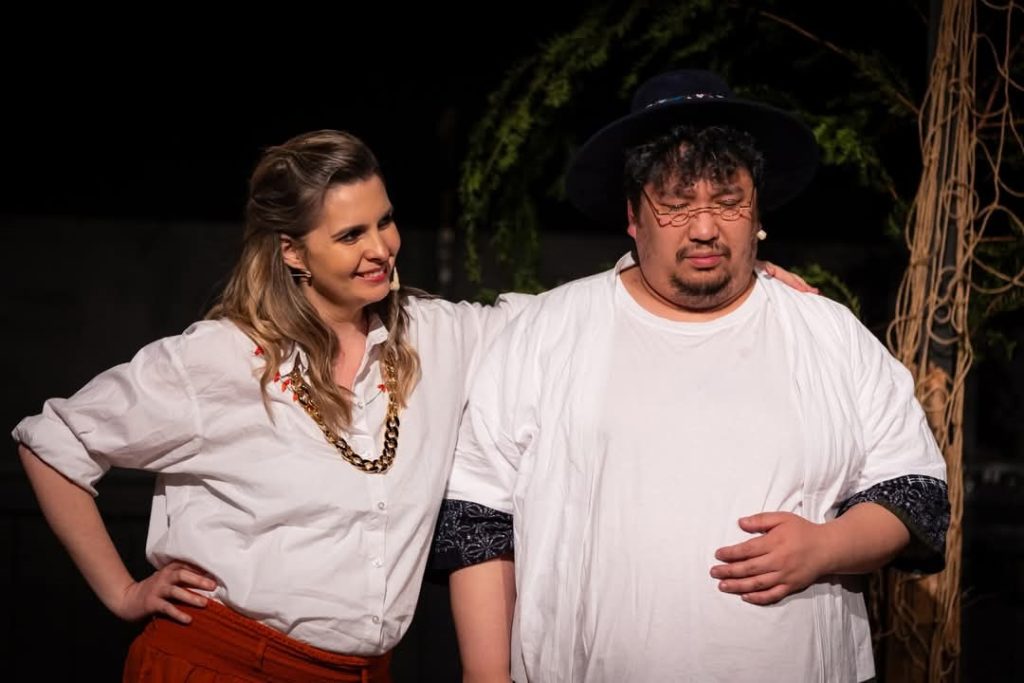
Meg Conway, returning to the York stage after a nine-year hiatus, as Antonia and assistant director Mikhail Lim as Gonzalo in Black Sheep Theatre Productions’ The Tempest
